#Ubuyashiki
Text
From a thing to wear to an icon of culture 👘

There is this hidden detail in Muzan that when I noticed I could not help but smile. Remember how he said that the thing he hated the most was change? Well coming from someone that had to live in 5 different eras is kinda funny, and it's even funny when you realize that he ended up adopting the Western fashion pretty fast. But that's the twist, if you look at Muzan's vest you come to realize that it's the exact same pattern as the kimono he used to wear. The best part? That was a thing that actually happened in history.
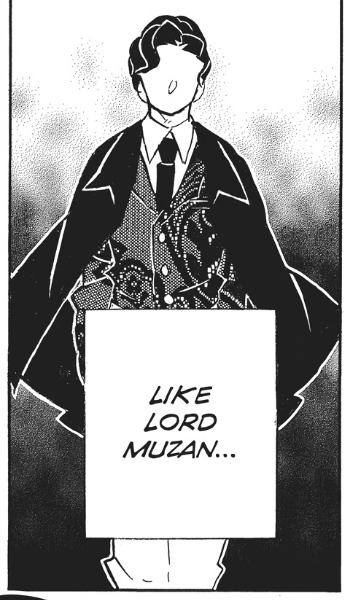
Wanting or not, the clothing that the people used to wear represents the history they lived through. "To look seriously at art objects of the everyday, such as clothes - their discourse and practices, their meaning-bearing forms and their codes of internal and external interpretations - in an essential, and often neglected, component of any study of modern aesthetics." - Slade, 2009
Yofuku [Western Clothing] is a type of clothing that is now common all over Japan, but during a lot of time, it was a type of clothes that only selected few grew up with. The 1st contacts with these types of clothing [even if extremely different from what we now call western clothing] was in the 16th century when the Portuguese arrived in Tanegashima. With them came not only different shapes but also different fabrics. But the “true” introduction to western fashion would only happen with Commodore Matthew Perry, catharsis to the Meiji restoration, where Emperor Meiji would start to dress in a typical western military outfit, and soon after the empress would start to aper in the typical victorian dresses.
In the Edo period clothing visually distinguished the social classes. "Certain articles of clothing visibly differentiated people of diverse social classes, and simultaneously distinguished an individual within a specific group. The materials, motifs and construction of military campaign coats, for example, marked their wearers as men belonging to the military class." - Milhaupt, 2014; Samurai ranked on the top, followed by farmers, artisans, and merchants on the bottom. What happen was that most of the times the samurai where poor while the merchants lived in economic success. But samurai had the privilege of using certain types of fabrics and patters, even tho most of the times they could not afford them, and so, the merchants would start to adapt the fabrics and patters they were allowed to were and would end up becoming the patrons of arts and fashion. The trends of fashion would later be documented in ukiyo-e, and not only in the work of art sense, but also in pattern books were people could browse the prevailing styles.
After the 1st contacts with the westerners, what would start to happen is that slowly but surely the Japanese would start to integrate the western ways of dressing into their lives. The Japanese started to introduce some of its elements with the kimono, shoes, hats, gloves, glasses, umbrellas, etc. Then in the 19th century a full change would happen starting from the man in the highest classes to the man in the lowest classes. The emperor decided to cut his topknot in 1872 and started to dress in western clothing in official appearances, also changing some of the more cultural habits like eating meat and more wester kind of meals. In the official portraits he appears adorned with a French-style military uniform with ornaments in gold and ostrich feathers. Before this, the emperor was never a public figure, so when pictures of the Meiji Emperor became available, and he started to appear more publicly the nation would have their eyes on him and start to imitate him.
Women would, for the longest time still dress in the now classic kimono, that would develop as a symbol of the old and traditional Japan. The idea of the western clothing being associated with a modernized Japan and the Kimono [that literally means “thing to wear”] to a traditional country came from the fact that the emperor would choose to wear western clothes in more formal, international events, and for religious national events would choose the traditional Japanese court dress. The western clothes will end up being a symbol of the modernization of Japan, and the Meiji government would use it as yet another tool of national control.
For all the Japanese born after 1945 the western clothes became the norm. Most families would end up transforming their kimonos into western clothing pieces, and the patterns sold for kimonos would double for kimonos and western clothing.

But it is funny to notice how despite it all Muzan is the one being presented in western clothing and Ubuyashiki is the one in traditional clothes, always being the contradiction of the other, but also it can also be interpretated as the Ubuyashibi family being "trapped" in the past since in hundred years the corps never killed an upper moon, the history never changed. And Muzan in his ever-changing cycle of his life, in the changing of eras and changing of personas he decided to reuse the only thing he could: his clothes. And just like him, they would adapt through the times.

MILHAUPT, Terry Satsuki. 2014 - Kimono: A Modern History. London: Reaktion Books [Ebook];
SLADE, Toby. 2009 - Japanese Fashion: A cultural History. Oxford, Berg. [Ebook];
#demon slayer#history#demon slayer from history to fantasy#demonslayerfromhistorytofantasy#history research#japanese history#demon slayer history#kimetsu no yaiba#research#demon slayer muzan#muzan kibutsuji#ubuyashiki#kimono
190 notes
·
View notes
Text
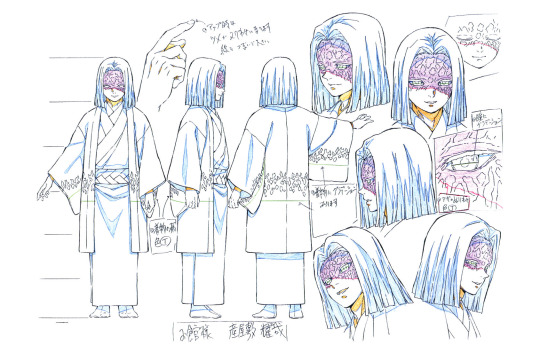

Kagaya Ubuyashiki Character Sheet + Kagaya without scarring (I believe he's 14 in that picture?)

#kagaya ubuyashiki character sheet#kny character sheets#demon slayer#kimetsu no yaiba#demon slayer reference#kny#oyakata-sama#kny kagaya#kny ubuyashiki#kny kagaya ubuyashiki#kny ubuyashiki kagaya#demon slayer kagaya#demon slayer ubuyashiki#demon slayer ubuyashiki kagaya#demon slayer kagaya ubuyashiki#kagaya ubuyashiki#ubuyashiki kagaya#kagaya#ubuyashiki
32 notes
·
View notes
Note
Hello!
I'm wondering what do you think about @askmuzan?
He's Muzan, what do you think I think of him?
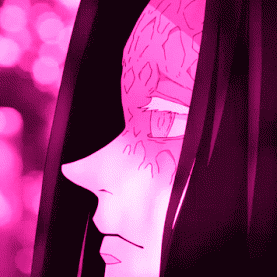
#kimetsu no yaiba#ask ubuyashiki#kagaya ubuyashiki#ask the hashira#ubuyashiki#demon slayer#hashira ask#kny#ubuyashiki anon#kimetsu no yaiba ubuyashiki
44 notes
·
View notes
Text

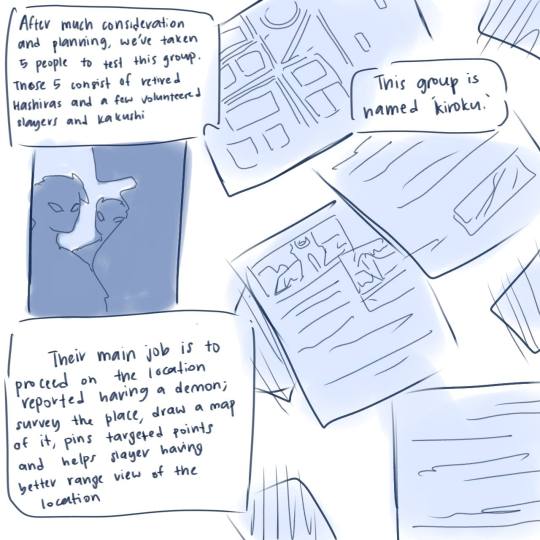
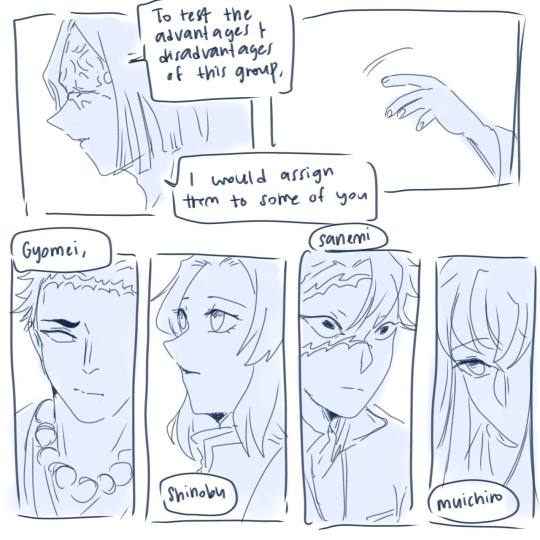
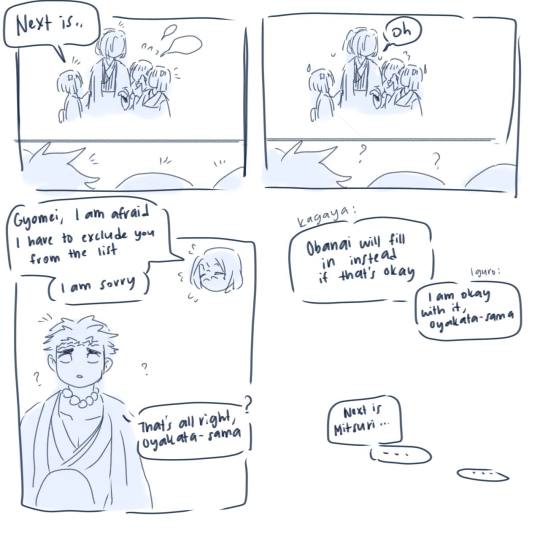
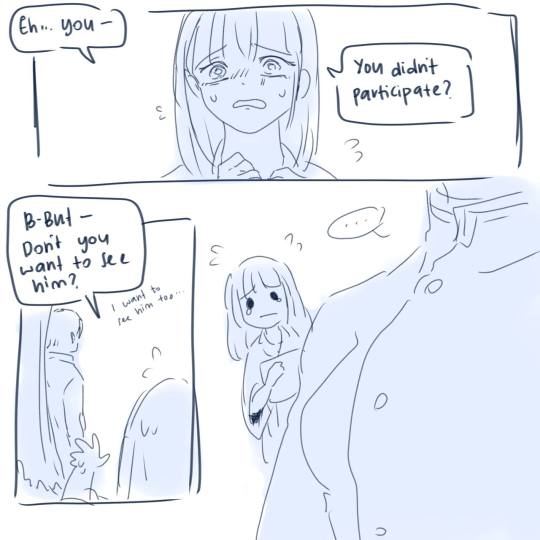

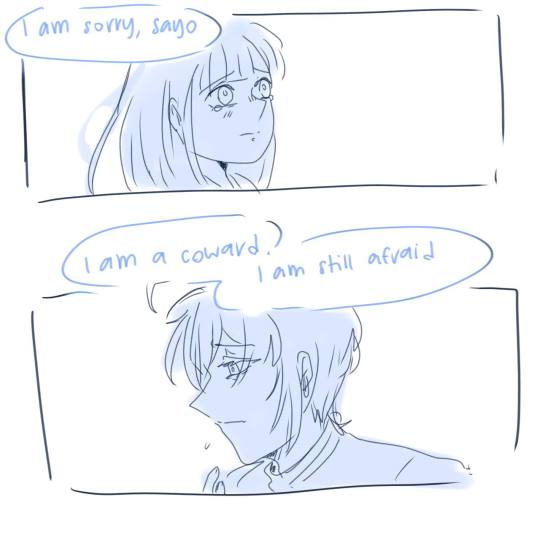
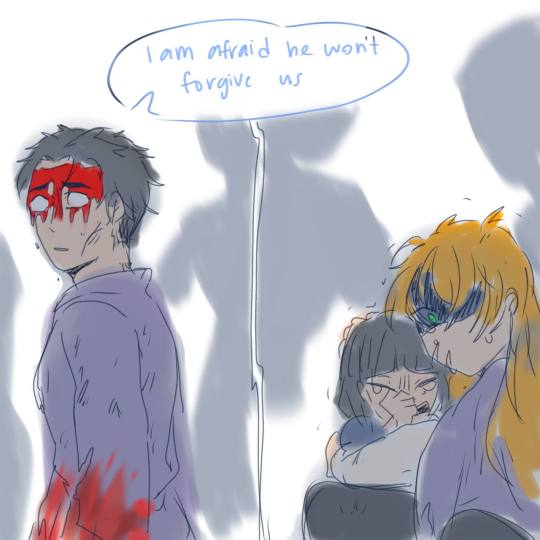
Belle should be participating working with a Hashira as a Kiroku, but she redraw at the last moment.
Lmao, yes, Belle still alive. She's not a demon, is currently working with the Ubuyashiki, and I'll tell more in the future.
Kiroku means " report "
Belle is using sign language, but if I am doing it incorrectly, please inform me!
#demon slayer#kny#kimetsu no yaiba#anime#digital art#drawing#demon slayer oc#gyomei#Hashira#kny oc#Ubuyashiki#Shinobu#Muichiro#sanemi
248 notes
·
View notes
Text
Manga panel of Kagaya Ubuyashiki
By Koyoharu Gotouge

#artists on tumblr#digital fanart#manga coloring#manga art#manga#kny fanart#kny kagaya#kagaya ubuyashiki#kagaya#ubuyashiki#Oyakata#kny demons#demon slayer#demon slayer manga#kimetsu no yaiba
18 notes
·
View notes
Text
I saw a post on Instagram talking about demon slayer specifically the marriage of Kagaya Ubuyashiki
The ARRANGED marriage
When Kagaya was married he was 13 and his wife Amane was 17. Icky age gap yes but this was a) arranged and b) she was married to him to be a caregiver due to his family's curse. But to me because she was more around marrying age (like 16-20) this age gap was to add to the fact of his curse. He doesn't get to have a normal marriage.
Then again Tengen and his wives. Tengen was 15 when he was arranged and honestly forced to marriage Hinatsuru (13), Makio (12), and Suma (11). But this is in a clan that devalues and mistreats women. Not to mention we can see how his interactions differ with Hinatsuru and Makio & Suma. Personally, looking at scenes and interactions, I believe that he has had romantic feelings for Hinatsuru the longest but loves them all equally but expresses it differently with Makio & Suma due to them being so young when they were married to him. ((Tho I do admit I hate seeing wedding night fics for them… like no no no no))
Both these marriages are between people who didn't have much of a choice in the first place. They are showing an example of people overcoming their circumstances. The age gap is meant to bother people not because the older side is a predator but because the marriages were arranged for terrible reasons
Also I have a bachelors degree in history and did my whole ass thesis (and three courses) under a professor who specializes in gender and family history in Japanese and no, these were not normal marriages for the time period. Arranged marriages were but the age gap and the younger ages (mainly Makio and Suma) were not common ages to marry at, with late teens to early 20s being more normal with the possibility of it being arranged earlier in life. I'll have look at old notes to be more specific but yeah. In canon we see a 16 year old girl who is engaged (and got eaten by a demon). That was the normal, not 13 or 14. ((Also makes the Ubuyashiki family information sadder when you consider the fact that the Ubuyashiki girls born into the family would have to be married off by 13 to be able to not die young.))
Anyway in the canon that we see them all the characters are adults. Amane and Tengen are not predators, they didn't really have a say in their spouses.
#demon slayer#kimetsu no yaiba#red rose speaks#amane ubuyashiki#Kagaya Ubuyashiki#tengen uzui#hinatsuru uzui#makio uzui#suma uzui#Tengen's wives#kny uzui#uzui#kny#master Ubuyashiki#Ubuyashiki#demon slayer corps
18 notes
·
View notes
Photo
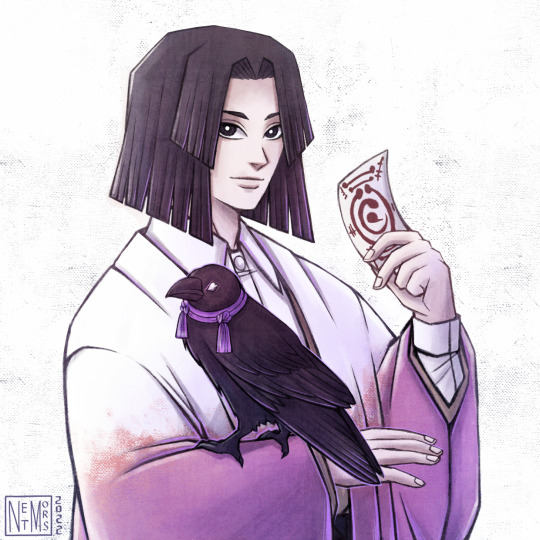

Grown up trio Ubuyashiki - Kiriya, Kanata and Kuina.
#Kimetsu no Yaiba#demon slayer kimetsu no yaiba#demon slayer#ubuyashiki kiriya#ubuyashiki kanata#ubuyashiki kuina#ubuyashiki#demon slayer corps#art#my art#kimetsu no yaiba fan art#au#netmors#anime#manga
158 notes
·
View notes
Text
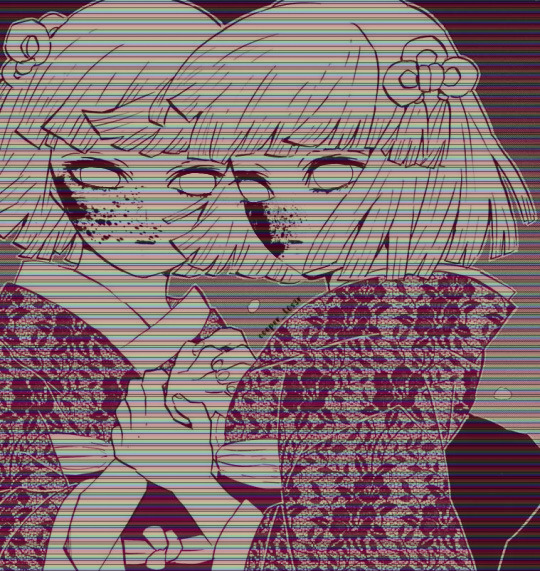
Weird demonslayer edit today lol
#anime#manga#manga art#demon slayer#kny#Kimetsu no Yaiba#Kagaya Ubuyashiki#Ubuyashiki#Ubuyashiki kids#idk their names#sorry#villain arc#weird edit#i kinda like it tbh
24 notes
·
View notes
Photo

Why don't the Ubuyashiki just adopt and do away with Muzan's curse, Is he stupid? , Meme by Weeblmao.com
#adopt#curse#dont#DSMemes#KimetsuNoYaiba#KimetsuNoYaibaMeme#KimetsuNoYaibaMemes#KNY#KNYMeme#Muzans#stupid#Ubuyashiki
4 notes
·
View notes
Text
Setting up Muzan's Profile (Part-1)
[After that interaction with Douma, Muzan was saved by none other than Uppermoon 3. Don't worry, it happened after he logged him up]
Muzan: *sighs in frustration* This better be good. Wh-
"Muzan-sama!!!"
Muzan: Not again...
Daki and Douma barged into the room, dragging a very angry Akaza, an unbothered Kokushibo, and the one with a very regretful face, Gyutaro.
Muzan: Why are you all here?
Daki: Muzan-sama, Douma told us that he signed you up, so we're here to set up your profile!
Muzan: I don't have energy to even reprimand them...
Muzan: *sighs and calls for them to stand beside him while he is sitting on his armchair*
All the Uppermoons gathered around him
Muzan: *extends his phone towards Daki and Douma* Make it fast, or I will strip you off of your rankings.
9 notes
·
View notes
Text
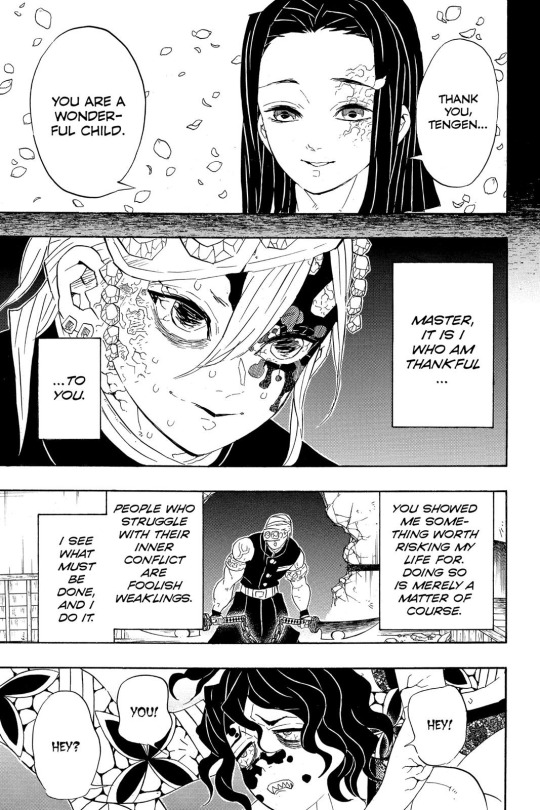
kny volume 10 chapter 87
#ceraknytag#kagaya ubuyashiki#tengen uzui#gyutaro#kagaya#ubuyashiki#tengen#uzui#kimetsu no yaiba ubuyashiki#kimetsu no yaiba uzui#kimetsu no yaiba gyutaro#kny kagaya#kny tengen#kny gyutaro#kimetsu ubuyashiki#kimetsu uzui#kimetsu gyutaro#gyutaro panel#tengen panel#kagaya panel#kny#kimetsu no yaiba#demon slayer#kny volume 10#kny chapter 87#demon slayer volume 10#demon slayer chapter 87#kny manga#kimetsu no yaiba panel#kimetsu no yaiba manga
17 notes
·
View notes
Text
Time in Japan 🕰️
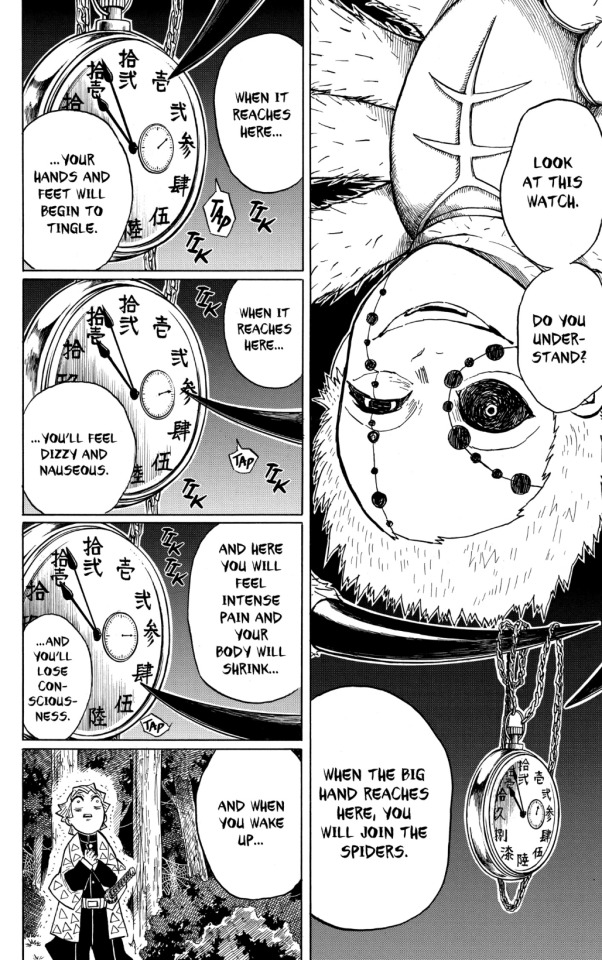
Did you realize something different in the clock that the spider Oni showed Zenitsu? I will let you think. Yes, it does not have numbers. I mean it does, in the tiny clock within the clock. And there is a reason for that, the clock that he is holding is a Japanese clock. So, a clock made in Japan? Ah not really. Let me explain.
People in Japan, like in most of Asia, did not count the time like we do today. There is the conception that ancient people lived according to natural cycles, that for them the daytime was for the living and the nighttime for the dead. Taking a step further, that westerns were concerned with schedules, and non-westerners seem to act like they did not care, they did not have a time-consciousness at all. But that was not true. The way they counted time sure was different but was still a way of counting the time, they used the so called “variable hour system”.
As the name suggests, the length of the hours varied with the seasons. The day was divided in daytime and nighttime, and each divided further in 6 equal periods called koku ou toki [ji]. Each of the twelve hours had the name of an animal of the zodiac. They would know the what time it was thanks to a public time-telling bells or drums, that were installed in high towers (to those that like to read danmeis like me, you must be pretty familiarized with this concept) so that the sound would be carried into the distance.
The mechanical clock arrived in Japan trough the hands of the Jesuit missionary Francis Xavier in the 16th century. It was gifted to the daimyo of Yamaguchi - Ouchi Yoshitaka - for him to allow Christianity in his territory, as soon more of this ticking machines would be asked to the Jesuits. Even Oda Nobunaga asked Louis Frois to see this intriguing machine, and, even tho this was an “useless thing” more and more clocks were brought to Japan to be used as expensive gifts. Even the Tokugawa family loved clocks even if they hated the westerns.
You should expect that since there was a flood of clocks in Japan that they soon would adopt this way of counting the time. That was not the case. The koku system continued in Japan until 1873, were in the 5th year of the Meiji Era the Emperor decided to adopt the Western calendar and way of dividing the time. But before that, western clocks were adapted into the Japanese way of seasonal time.
They were called “Wadokei - 和時計 - Japanese clock”. Why did this happen? Well because “the clocks were counting the wrong time of hour!” Edo people were not used at not having the distinguishing between long and short hours, so they quickly decided to adapt the various types of western clocks into their system. “The mechanism of these clocks was practically identical to that of Western devices of the sixteenth century, with the only alteration being made to the locking plate of the alarm, which was modified to allow the clock to strike the number of times according to the Edo-period hour count, which consisted of double nine-to-four countdown series” - Frumer, 2012;
While it started as a novelty, by the 18th century clocks were not a rarity anymore. “Most mechanical clocks were only available to the rich and powerful, but the emergence of the economical and less decorative type indicates that there was some demand for mechanical clocks in the general society, possibly by merchants for their practical use in knowing the precise time.” - Hashimito, 2020; While we see the most expensive and decorative ones at museum, we must not forget that is exactly these characteristics that made their owners not throw them away, because in the case of a simple one you wouldn’t even think twice. “Clocks are not different from other museum exemplars suck as pottery or lacquerware - the existence of the state-of-art object does not imply that there were no simpler versions used by people of humbler status the daimyo” - Frumer, 2012;
Japanese clocks soon started to have both the Japanese hours and western hours, like in the clock that the Oni does have! While sure by the Taisho era the Japanese society would be fully adapted to the western way of telling the time, but imagining that the Oni was a human while this was the standard way of telling the time it is understandable why he does have that clock. Plus said clock had an specific time for the sunrise so can you really blame him for sticking to that? Same with the Ubuyashiki girl clock. Since they had to track the sunrise it would be way more easy to keep an old japanese clock that was the best a doing that job!

FRUMER, Yulia. 2012. - Clocks and Time in Edo Japan. PhD. Diss. Faculty of Princeton University;
HASHIMITO, Takehiko, 2008 - Japanese Clocks and the History of punctuality in Modern Japan. East Asian Science, Technology and Society: An International Journal, 2:1, 123-133. <https://doi.org/10.1215/s12280-008-9031-z>
Linfamy. 2022- How christians intruduced the first mechanical clocks to Japan for GOD. https://www.youtube.com/watch?v=qQVNxAVlR44
Linfamy. 2023 - Traditional japanese clocks: 1200 years of history. https://www.youtube.com/watch?v=R5eJgqSV6eA&t=321s
#demon slayer#demon slayer from history to fantasy#demonslayerfromhistorytofantasy#kimetsu no yaiba#demon slayer history#history#research#history research#japanese clocks#zenitsu agatsuma#ubuyashiki
20 notes
·
View notes
Text
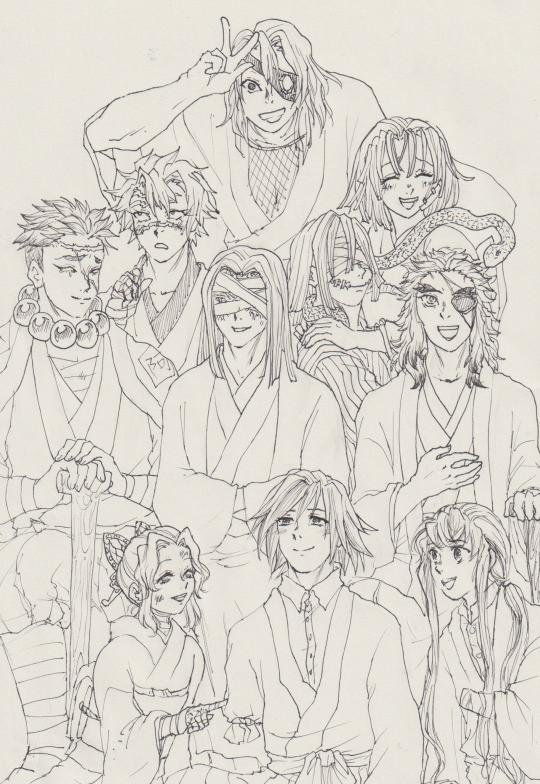
Maybe in a softer time...
#ubuyashiki kagaya#himejima gyomei#himejima gyoumei#kanroji mitsuri#iguro obanai#shinazugawa sanemi#uzui tengen#rengoku kyojuro#rengoku kyoujurou#kocho shinobu#kochou shinobu#tomioka giyu#tomioka giyuu#tokito muichiro#tokitou muichirou#my art#my nice art#except that I don't care about anatomy#let's just say Muzan rearranged their anatomy#kny fix it au#Softer Time AU
2K notes
·
View notes
Note
rengoku should let mitsuri braid his hair
"Would braids be more ethical than my usual hairstyle!? Ok! I'll try it!"
- Kyojuro Rengoku
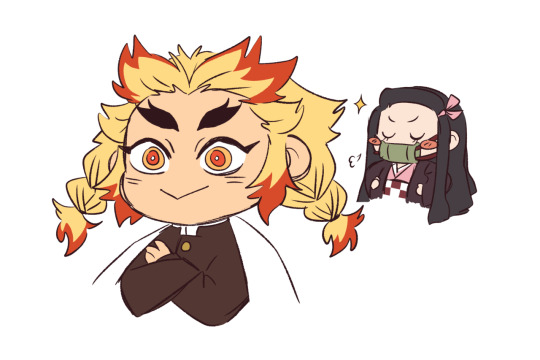
#kimetsu no yaiba#ask ubuyashiki#kagaya ubuyashiki#ask the hashira#ubuyashiki#kny#demon slayer#hashira ask#ubuyashiki anon#kimetsu no yaiba ubuyashiki
16 notes
·
View notes
Text
Into the silly verse of demon slayer
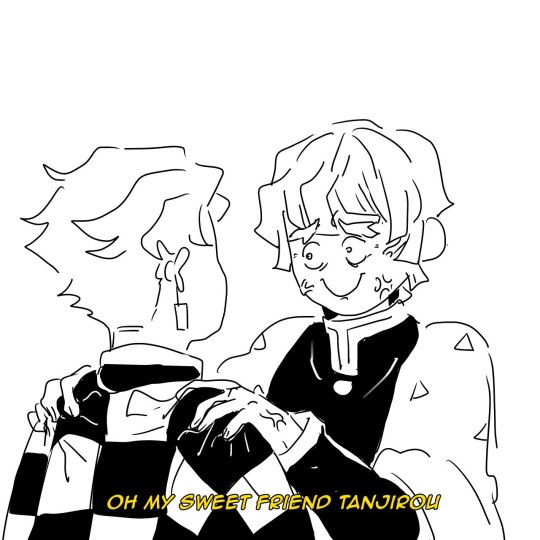

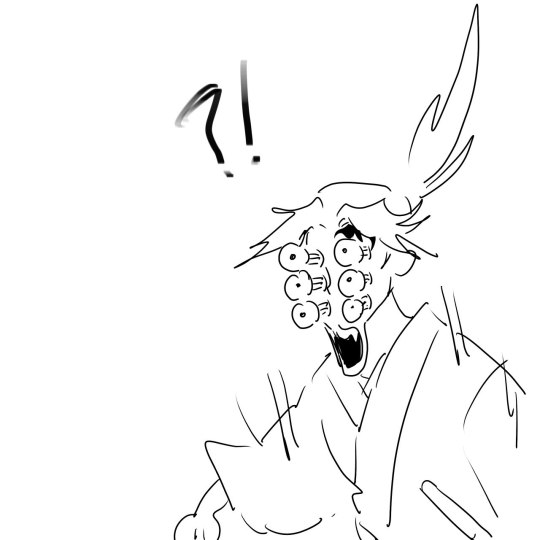

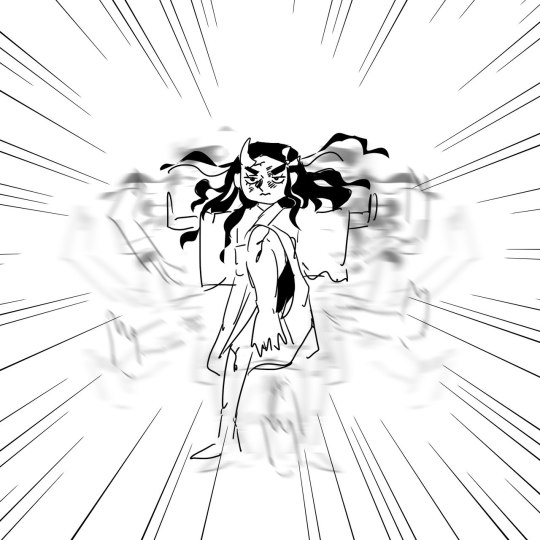


#demon slayer#kny#drawing#kimetsu no yaiba#anime#digital art#shinobu#akaza#kokushibou#tanjiro#Zenitsu#Nezuko#Mitsuri#obanai#obamitsu#kny ubuyashiki#douma
805 notes
·
View notes
Text










the people demanded more baby muichiro / baby hashira au and who am i to deny them it (i will be taking a break though my wrists are TIRED)
most recent post | "umai!" "umai..." idea
#demon slayer#kny#kny art#demon slayer art#muichiro tokito#tanjiro kamado#inosuke hashibira#shinobu kocho#rengoku kyojuro#kokushibo#kagaya ubuyashiki#amane ubuyashiki#sanemi shinaguzawa#genya shinazugawa#tengen uzui#de aging#deaged au#artbites#baby hashira au
3K notes
·
View notes